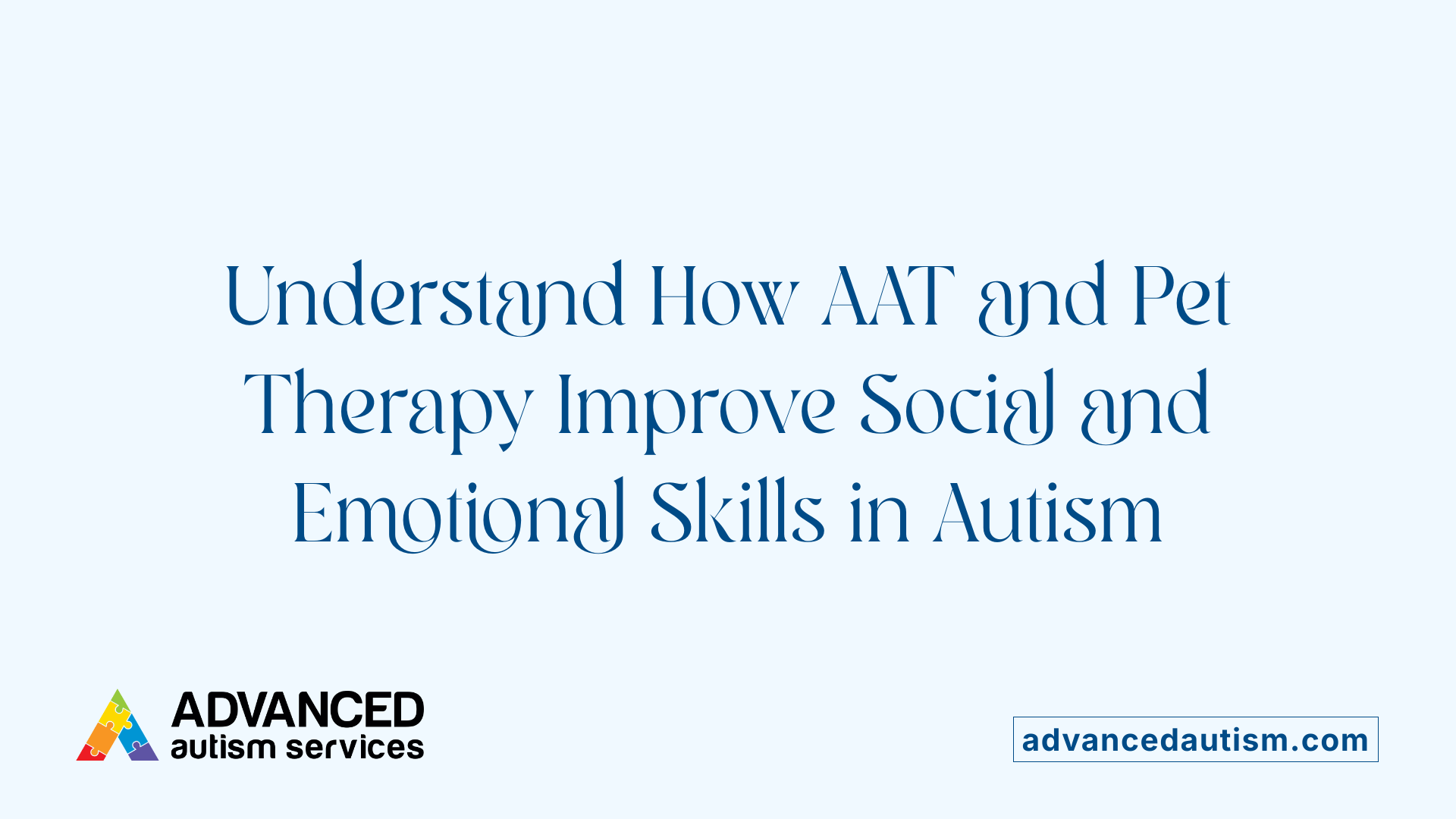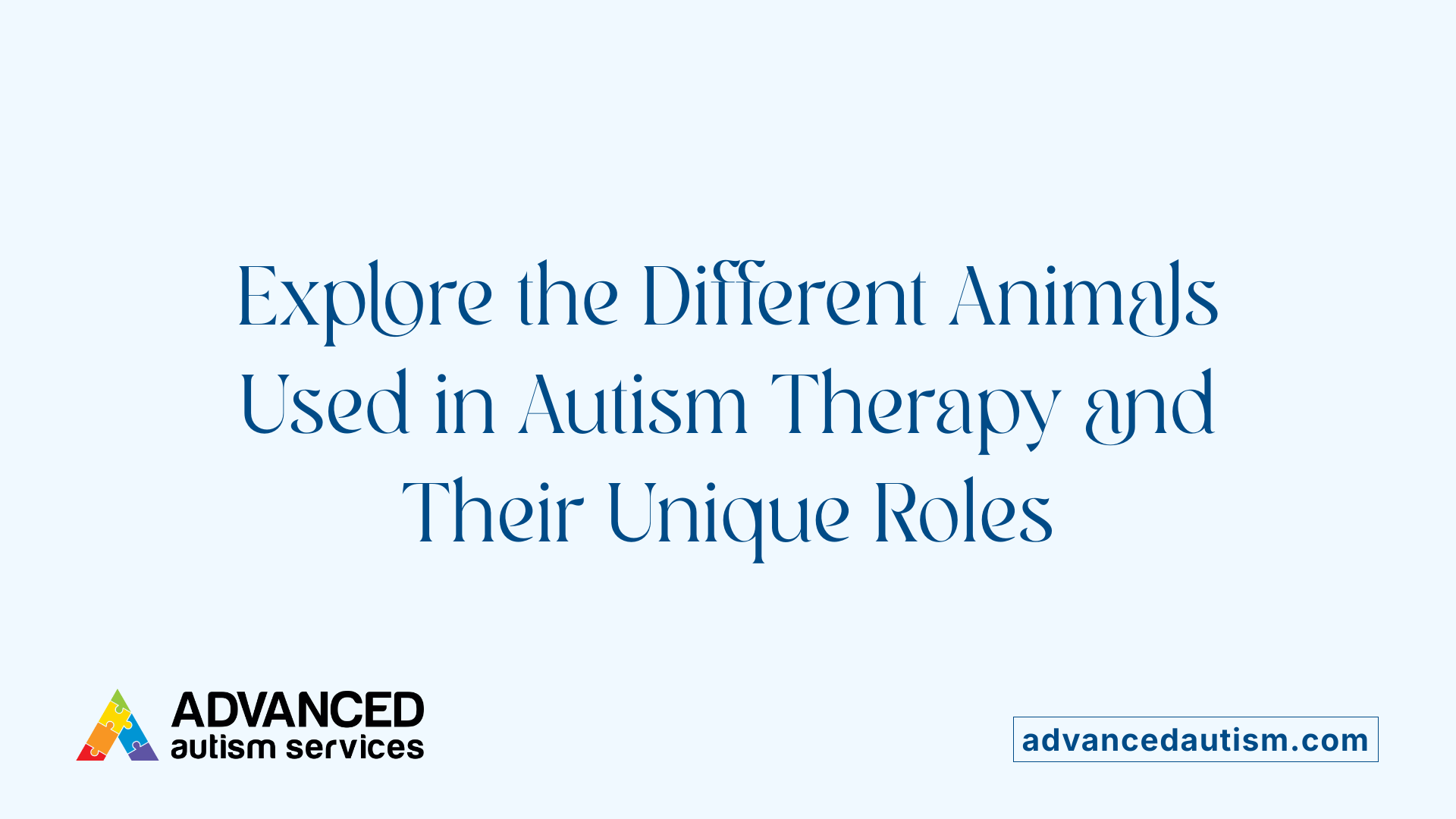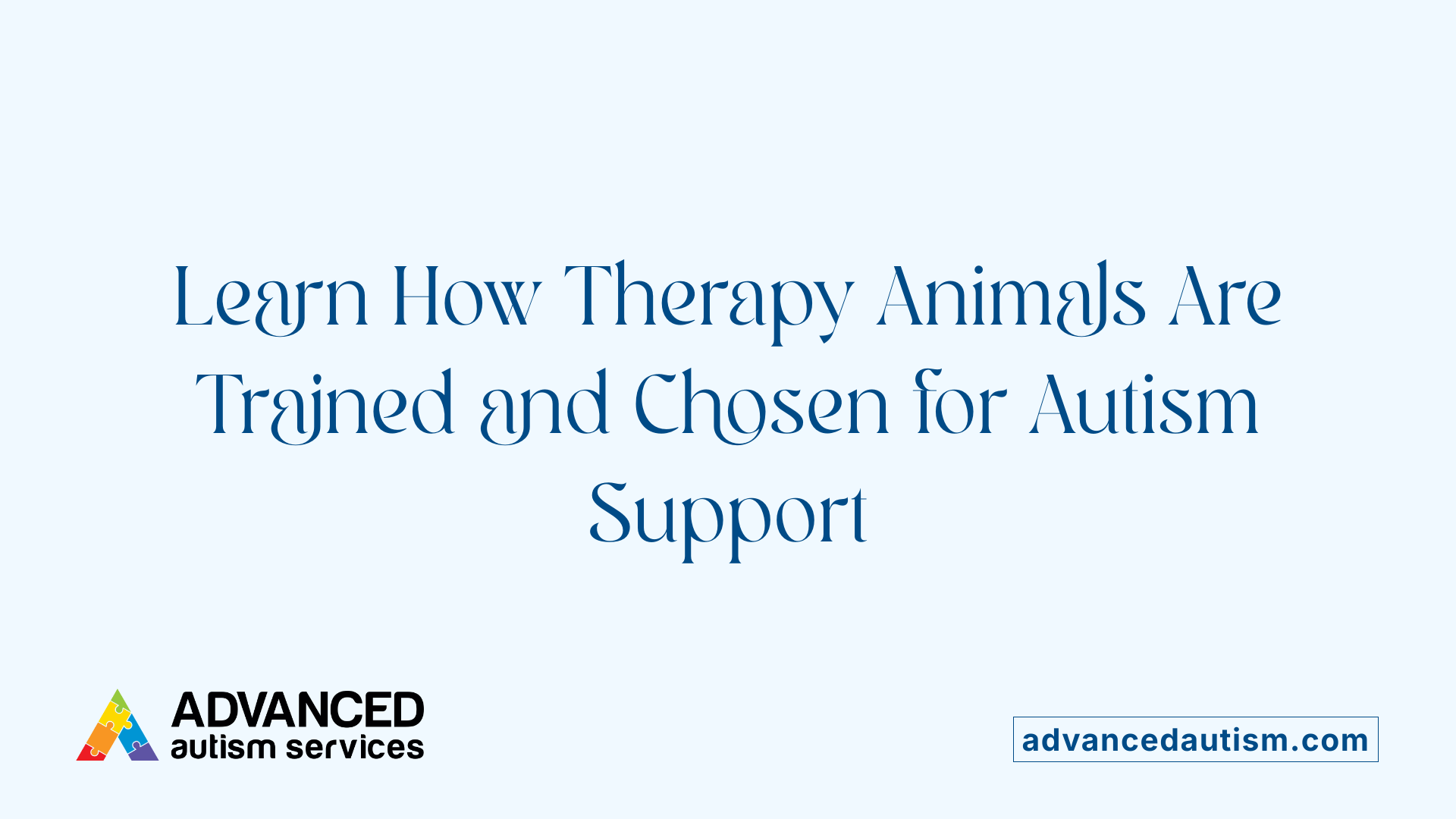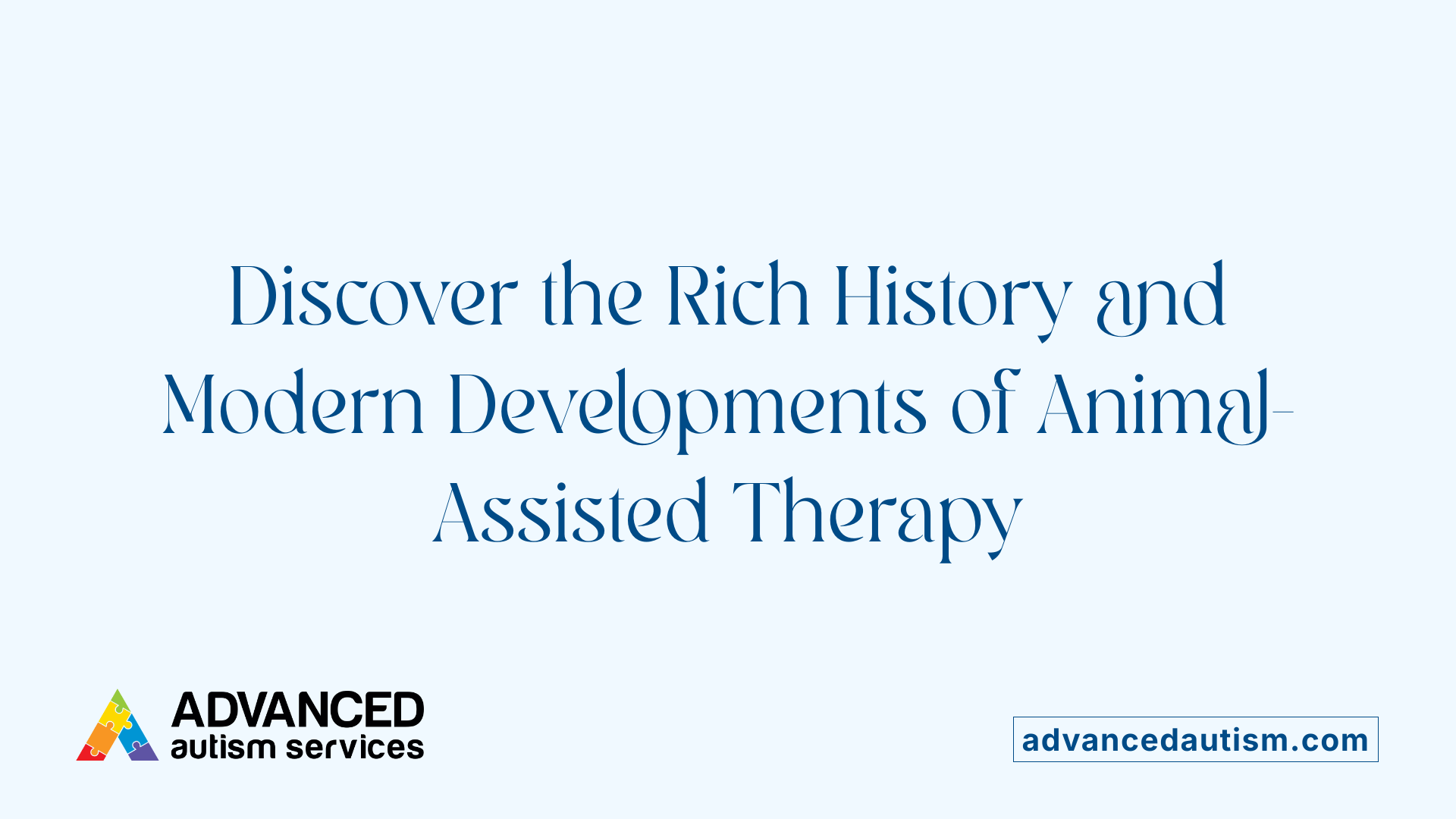Autism Animal & Pet Therapy
Harnessing the Healing Power of Animals in Autism Support
Introduction to Autism Animal & Pet Therapy
Animal-assisted therapy (AAT) and pet therapy have gained recognition as valuable complementary approaches for supporting individuals with autism spectrum disorder (ASD). These therapies utilize various animals to enhance emotional, social, and physical well-being, promoting growth and development in autistic children and adults. This article explores the types of animals used, their roles, scientific evidence, practical applications, distinctions between animal support categories, and the origins of these therapies.
Understanding Animal-Assisted Therapy (AAT) and Pet Therapy in Autism Support

What are the benefits of animal-assisted therapy for individuals with autism spectrum disorder?
Animal-assisted therapy (AAT) offers a range of advantages for children and adolescents with autism. Interacting with animals helps promote emotional regulation, reduces anxiety, and encourages engagement in therapy sessions. Animals, especially dogs, serve as social catalysts, helping autistic individuals develop trust and confidence.
Research and participant feedback highlight improvements in social behaviors, communication, and emotional well-being. AAT fosters motivation, supports sensory regulation, and can aid in developing motor skills and self-esteem. When combined with established therapeutic practices like applied behavior analysis (ABA), AAT provides an engaging environment tailored to individual needs, often facilitating better learning and behavior management.
Overall, animal-assisted therapy creates a nurturing space for enhancing social skills, emotional health, and independence among those on the autism spectrum.
Types of Animals Used and Their Roles in Autism and Pet Therapy
 Animals play a significant role in supporting children with autism through therapy and companionship, offering emotional, sensory, and social benefits. Common animals used in autism and pet therapy include dogs, cats, horses, guinea pigs, fish, and farm animals.
Animals play a significant role in supporting children with autism through therapy and companionship, offering emotional, sensory, and social benefits. Common animals used in autism and pet therapy include dogs, cats, horses, guinea pigs, fish, and farm animals.
Dogs are often considered the most versatile and helpful in therapy sessions. They can serve as emotional support animals, reduce anxiety, and assist with social interactions. Breed choices like Labradoodles and golden retrievers are popular due to their calm temperaments and hypoallergenic qualities.
Cats are valued for their independence and soothing presence. They require less attention than dogs and can be a calming influence, making them suitable for children who prefer gentle companionship.
Horses are used in hippotherapy and therapeutic horseback riding, which aim to improve motor skills, sensory processing, and emotional regulation. The movement of the horse provides sensory stimulation that can benefit neuromuscular development.
Guinea pigs and fish are low-maintenance animals that promote calming effects. Guinea pigs are social and responsive, helping children develop responsibility and social skills. Fish, especially in aquariums, create a relaxing environment that reduces stress.
Farm animals such as cows, sheep, goats, and pigs are utilized in farm animal-assisted therapy. Interacting with these animals can foster social behaviors, routine, and a sense of normalcy.
Each animal type has specific traits important for therapy success. Animals should enjoy human contact, be well-trained and healthy, and possess a calm demeanor. These qualities help maximize their therapeutic potential and ensure safety.
In summary, the variety of animals used in autism therapy serve distinct roles—from providing companionship and emotional support to improving motor and social skills—tailored to meet individual needs and therapeutic goals.
Training, Suitability, and Selection of Therapy Animals

How does animal-assisted therapy support social skills and emotional well-being in autistic individuals?
Animal-assisted therapy (AAT) offers a supportive environment that fosters trust and emotional safety, making it easier for autistic individuals to develop social skills and improve emotional health. Engaging with therapy animals like dogs or even horses encourages behaviors such as sharing, cooperation, and expressing feelings, which often translate into better social interaction with people.
The multisensory experiences provided by animals can help reduce stress, anxiety, meltdowns, and hyperactivity. These interactions serve as emotional anchors and social mediators, motivating children to participate and feel accepted. Animals act as calming and emotional support figures, helping individuals regulate their feelings and become more receptive to therapy or social situations.
Studies and clinical practice support that AAT contributes to emotional stability and social growth. By providing a positive, engaging, and sensory-rich experience, animal-assisted interventions can enhance trust, boost self-confidence, and promote emotional acceptance, making them a beneficial complement to traditional therapies.
How can one obtain a service dog for autism, and what training do these animals undergo?
Acquiring a service dog for autism involves working with specialized organizations that train and certify these animals. The process usually starts with an application and needs assessment to determine what specific tasks the dog must be trained for, such as calming, alerting to sensory overload, or preventing self-harming behaviors.
Once accepted, the dog undergoes rigorous training that includes basic obedience, socialization, and specific task training tailored to the individual’s needs. These tasks might involve recognizing signs of distress and acting accordingly, providing a calming presence, or assisting during outings.
The training ensures the dog can reliably respond to the person's cues and perform support tasks effectively. Setting up this process requires working with accredited providers, understanding eligibility requirements, and considering costs involved, including ongoing care and maintenance of the dog.
What is the difference between service, therapy, and companion animals in supporting autism?
Service animals, such as specially trained dogs, have legal protections under laws like the Americans with Disabilities Act (ADA). They are trained to perform specific tasks that support an individual’s safety and daily functioning, such as alerting to overstimulation or helping prevent self-injury.
Therapy animals are trained to provide emotional comfort and support in clinical, educational, or social settings. While they foster emotional and social benefits, they do not have public access rights unless they are also certified as service animals.
Companion animals, usually family pets like well-trained dogs or cats, offer unconditional love, comfort, and companionship. They help reduce anxiety and foster social interactions but are not trained for specific support tasks or granted public access.
Emotional support animals primarily provide emotional relief through companionship but generally lack specialized training and are limited in access rights.
Are there scientifically proven benefits of animal-assisted therapy for autism?
Current scientific evidence suggests that animal-assisted therapy can positively influence children and adults with autism spectrum disorder. Meta-analyses and systematic reviews point to improvements in social communication, increased engagement, and reductions in irritability and hyperactivity.
Research indicates that animals can promote emotional regulation and sensory processing by providing multisensory input and hormone release, such as oxytocin, which enhances bonding and emotional well-being.
However, the scientific community acknowledges limitations in the existing research, including small sample sizes, variability in protocols, and methodological concerns. Despite these challenges, many practitioners observe benefits like increased social behaviors, smiling, and overall emotional calmness.
While more rigorous, long-term studies are needed to confirm the extent of these benefits, current evidence supports AAT as a promising complementary approach for improving quality of life and social skills among autistic individuals.
| Aspect | Details | Additional Notes |
|---|---|---|
| Types of Animals | Dogs, horses, guinea pigs, cats, farm animals, birds, zoo animals | Choice depends on individual needs and environment |
| Benefits | Emotional support, social catalyst, sensory regulation, responsibility | Can be used in various settings including home, school, clinics |
| Training Processes | Basic obedience, specific task training, socialization | Led by accredited organizations, standardized protocols recommended |
| Selection Traits | Calm, social, healthy, well-socialized animals | Traits ensuring suitability for therapy environments |
| Legal & Safety Considerations | Certification, adherence to standards, risk mitigation | Ensures safety for both animals and humans |
This overview emphasizes that choosing and training the right animal is crucial for maximizing therapeutic benefits and ensuring safety and compatibility in supporting autistic individuals.
Origins and Evolution of Animal-Assisted Therapy and Pet Therapy

What is the origin of pet therapy and how did it develop into modern practices?
The roots of pet therapy trace back to 1792 in England, where animals were first employed to promote mental health and emotional recovery. These early efforts laid the groundwork for integrating animals into therapeutic contexts. In the mid-20th century, American psychiatrist Boris Levinson significantly advanced the field. In 1953, Levinson observed that dogs provided emotional support during therapy sessions with autistic children, highlighting the positive influence of animals in mental health interventions. This pioneering work inspired a variety of animal-assisted approaches, broadening the scope to include different species such as guinea pigs, farm animals, and horses. Over subsequent decades, the field has evolved with scientific research, the development of standardized training, and safety protocols, enabling animals to be systematically incorporated into clinical, educational, and physical therapy settings. Today, animal-assisted therapy (AAT) is recognized as a vital adjunct to traditional treatment modalities. It encompasses diverse practices—ranging from therapy dogs and horses to farm animals—that aim to improve emotional, social, and physical well-being.
How has animal-assisted therapy evolved in recent years?
Recent developments indicate a growing recognition of the benefits of AAT, alongside increased research efforts and professional standards. More rigorous studies have demonstrated its positive effects on individuals with autism, mental health disorders, and physical disabilities. The practice now involves a variety of models, including client-centred approaches, mixed protocols, and specialized interventions, all tailored to meet individual needs. Equine-assisted therapies like hippotherapy, as well as farm animal programs, illustrate the expanding diversity of therapy options. Efforts have also focused on training and certifying therapy animals, ensuring safety and ethical treatment. Organizations and practitioners emphasize evidence-based practices, integrating scientific findings with the human-animal bond. Overall, these advances reflect a more structured, validated, and ethically grounded approach, making animal-assisted therapy a respected component of holistic treatment strategies.
Empowering Through Animal-Driven Interventions
Animal-assisted therapies and pet interventions offer valuable, evidence-supported benefits for individuals with autism, enhancing social, emotional, and behavioral skills. The variety of animals used—from dogs and cats to horses and farm animals—provides diverse opportunities for connection, learning, and healing tailored to individual needs. As research progresses and standards improve, these therapies continue to evolve, positioning them as effective complementary tools within broader autism support strategies. Understanding the distinctions between service, therapy, and companion animals helps in selecting the most suitable form of support. With trained, well-assessed animals working alongside skilled practitioners, autism animal and pet therapy holds promising potential to empower those on the spectrum toward greater independence, confidence, and quality of life.
References
- An Evaluation of Animal-Assisted Therapy for Autism Spectrum ...
- Service dogs or therapy dogs for autism | Autism Speaks
- Animal-assisted therapy: autistic children | Raising Children Network
- What Do We Really Know about Animal Interventions for Autism?
- Animal-Assisted Social Skills Training for Children with Autism ...
- The effectiveness of animal-assisted therapy for children and ...
- Animal therapy to the rescue of autism - Zanimo







